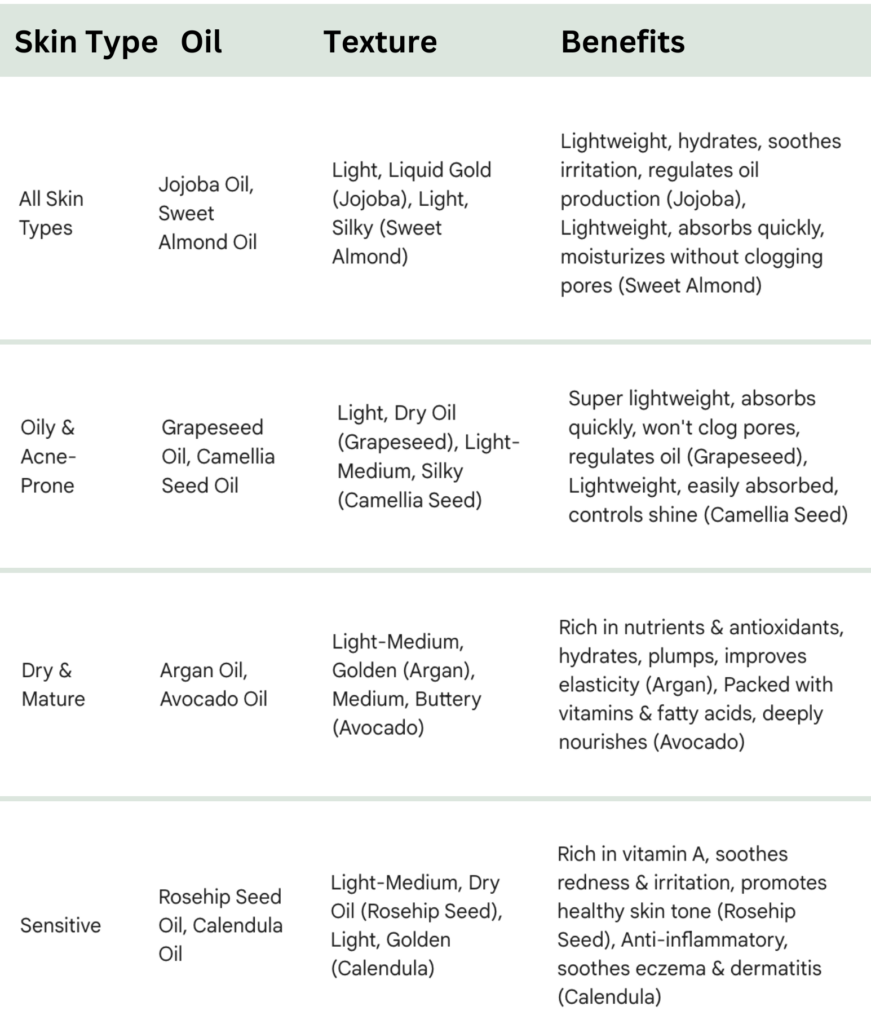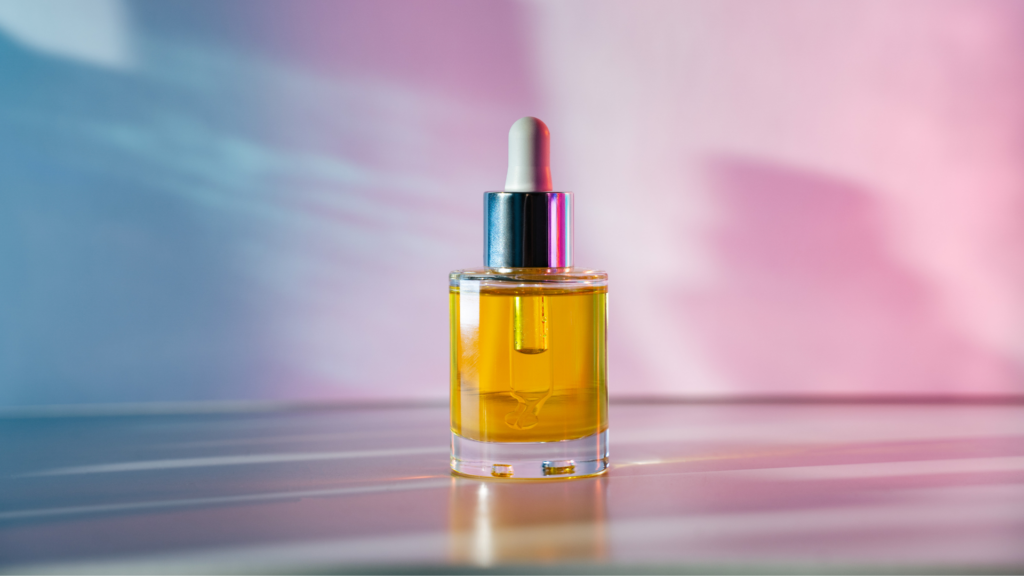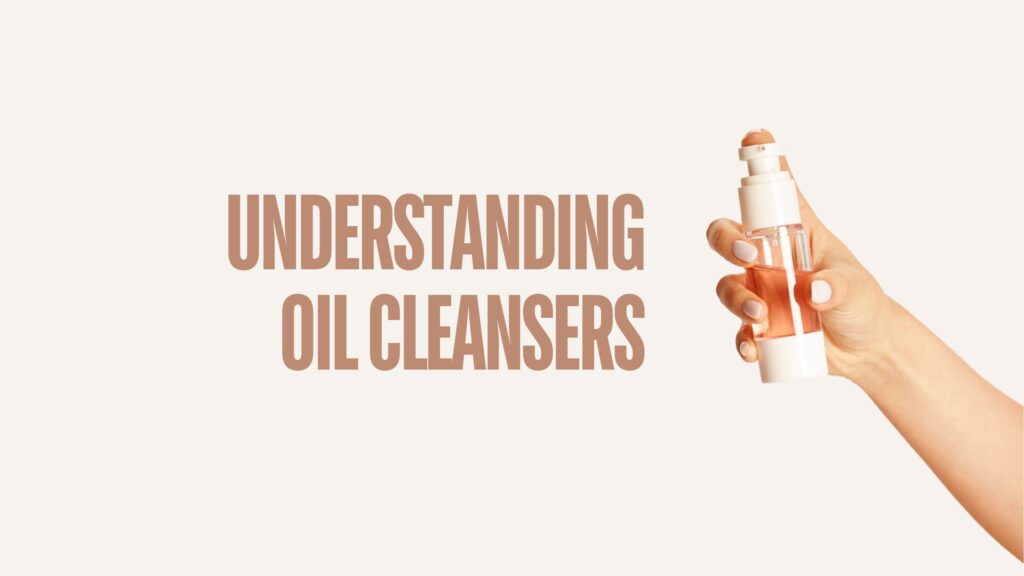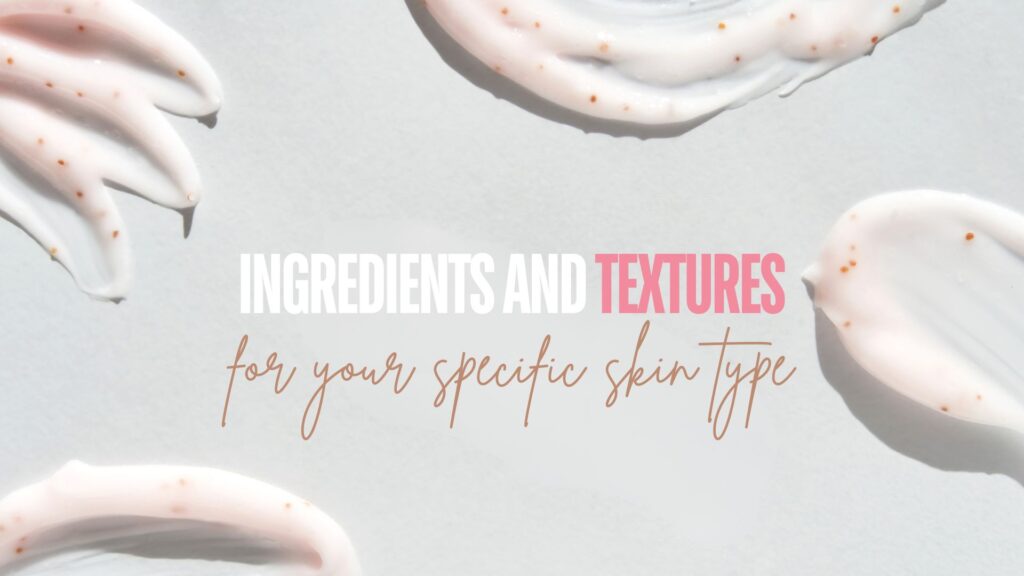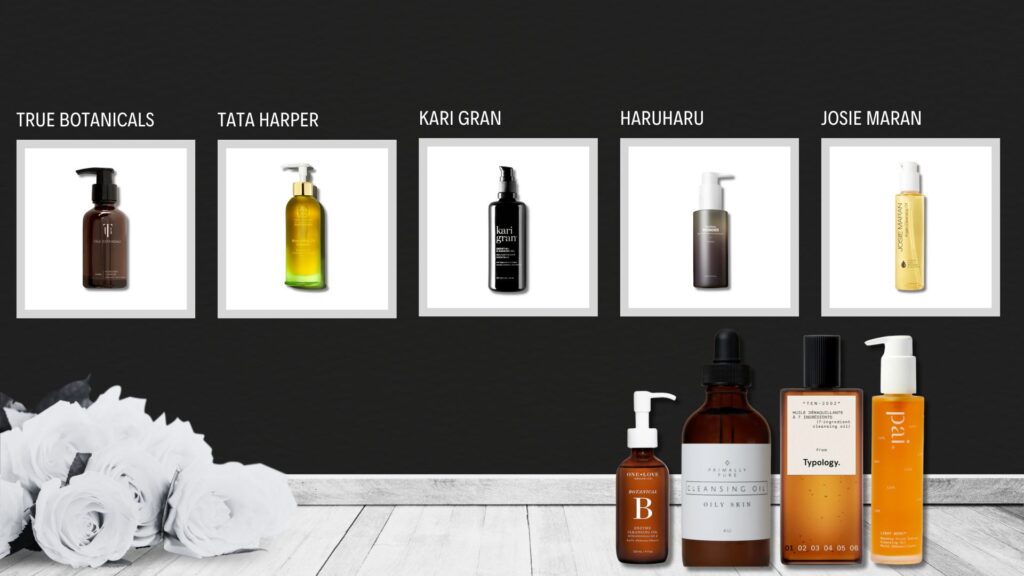What is the best oil-based cleanser for your skin?
Is an oil-based cleanser a good a idea for you? Yes, it is! But it depends on your skin type and the molecular size of the oil.
Let’s start here: Forget the harsh chemical cleansers that leave your skin feeling stripped and tight. Natural oils are where it’s at! But just like with pizza oil, not all oils are created equal.
Some are lightweight and perfect for oily skin, while others are richer and better suited for dry complexions.
The key is finding your ideal match!

The Power of Plants
Natural oils are exactly what they sound like – squeezed from the goodness of nuts, seeds, and plants. Think jojoba oil, sweet almond oil, grapeseed oil – the list goes on!
Natural oils are packed with nutrients that can benefit your skin in all sorts of ways. They can mimic your skin’s natural oils, helping it stay balanced and hydrated.
Mineral Marvels: The Underground All-Stars
Mineral oils, on the other hand, are derived from petroleum. They’re not inherently bad, but they don’t offer the same kind of skincare benefits as natural oils. Think of them as more of a workhorse – they’re great at trapping moisture and keeping your skin feeling slippery smooth, but they don’t have the same nutrient punch.
Lightweight Champs vs. Rich Heavyweights: The Great Oil Divide
So, why are some oils feather-light while others feel luxuriously rich? It all boils down to the size and structure of the oil molecules.
Imagine tiny marbles versus bouncy beach balls. Lighter oils, like jojoba oil, have smaller molecules that can sink in quickly, leaving a non-greasy finish. Perfect for oily or acne-prone skin!
Richer oils, like avocado oil, have those bigger, beach ball-sized molecules that take longer to absorb and create a more luxurious feel. These are ideal for dry or mature skin that craves extra moisture.
Comedogenic Rating
You might have also seen a term floating around called “comedogenic rating.” This is basically a fancy way of saying how likely an oil is to clog your pores and lead to breakouts.
Natural oils generally have lower comedogenic ratings, meaning they’re less likely to cause problems. Mineral oils can sometimes clog pores, so if you have acne-prone skin, you might want to steer clear.
We’ll dive into specific comedogenic ratings of popular oils in the next part, but for now, remember: Natural oils are generally lighter and gentler, while mineral oils can be more occlusive (meaning they trap moisture). Choose your oil warrior based on your skin’s needs!
In a nutshell
– Natural oils are squeezed from plants and nuts, packed with nutrients (think jojoba, almond, grapeseed)
– Mineral oils are derived from petroleum, they are good at trapping moisture but lack the skincare benefits of natural oils
– Oil weight depends on molecule size
– Lightweight oils (smaller molecules): Absorb quickly, perfect for oily or acne-prone skin (think jojoba)
– Rich oils (larger molecules): Take longer to absorb, great for dry or mature skin (think avocado)
– Comedogenic Rating: This tells you how likely an oil is to clog pores. Natural oils generally score lower
What exactly is an oil cleanser, and how does this whole oil-based thing actually work?
Forget everything you know about squeaky-clean faces – oil cleansers work differently (and much better) than traditional soaps.
Understanding Soap
Traditional soap gets a bad rap for a reason, and it’s not because it’s a bully (although that’s a pretty funny image!).
Here’s the science behind why soap might not be the best BFF for your face.
Soap 101: The Sudsy Science
Traditional bar soaps and many foaming cleansers are made with ingredients called alkalies. These are basically the Gegenteil (German for “opposite”) of the natural pH level of your skin, which is slightly acidic.
Think of pH as a scale from 1 (super acidic) to 14 (super alkaline). Your skin ideally likes to hover around 5.5.
The Harsh Truth About Soap
So, using a soap with a high pH disrupts the delicate balance of your skin’s natural acidity. This can lead to a whole host of problems, like:
– Dryness and Tightness: Soap strips away dirt, makeup, and your skin’s natural oils, leaving it feeling parched and uncomfortable. Imagine washing your favorite silk scarf with dish soap—it might get clean, but it’ll lose its softness in the process!
– Increased Sensitivity: Disrupted skin is more prone to irritation and redness, especially if you have sensitive skin.
– Breakouts: Stripped skin can go into overdrive, trying to produce more oil to compensate for what’s been lost. This can lead to clogged pores and breakouts.
Understanding Oil Cleansers
It all boils down to some fascinating science – a combination of chemistry and your skin’s natural biology.
Like Dissolves Like: The Magic Attraction
Remember that old science experiment where you mixed oil and water? They never truly became friends, right? Oil and water are polar opposites, thanks to their molecular structure. This same principle is the key to oil cleansing.
– Makeup, dirt, and sunscreen: These are often oil-based or contain oily ingredients. Think of them as the “unwanted guests” on your skin.
– Oil cleanser: This is formulated with natural oils that have a similar molecular structure to those unwanted guests.
Here’s where the magic happens. When you massage the oil cleanser onto your skin, the oil molecules in the cleanser are attracted to the oil molecules in your makeup, dirt, and sunscreen. They basically grab onto them.
Now, the cool part – when you add a splash of warm water, the oil cleanser changes its personality. It transforms into a milky lotion thanks to clever emulsifiers in the formula. These emulsifiers are like tiny matchmakers, helping the oil and water to briefly hold hands.
This newfound ability to mix with water allows the oil cleanser (now loaded with all the impurities it attracted) to rinse away easily, leaving your skin clean and balanced.
It’s like giving your face a gentle but thorough detox, all without disrupting the natural oils your skin needs to stay healthy and hydrated.
Oil Cleansing Benefits: Beyond Just Clean Skin
Oil cleansing isn’t just about removing makeup. Here are some other amazing benefits:
-Hydration Hero: Natural oils can help lock in moisture, leaving your skin feeling plump and dewy.
-Gentleness is Key: Oil cleansers are super gentle, even on sensitive skin.
-Balanced Beauty: By removing only the bad oil, not the good stuff your skin naturally produces, oil cleansers can help regulate oil production and keep your skin balanced.
Ingredients and textures to look out according to your skin type
Now that you’re convinced that oil cleansing is the way to go, it’s time to find your perfect match!
Different oils have different properties, so choosing one that complements your unique skin type is key.
Here’s a handy guide to 10 superstar natural oils, along with their textures, benefits, and who they suit best:
For all skin types
Jojoba Oil (Texture: Light, Liquid Gold):
This wonder oil comes from the jojoba shrub, and its chemistry is very similar to the sebum your skin naturally produces. Jojoba oil is a true champion – lightweight, non-comedogenic (0), and perfect for all skin types, even oily skin! It hydrates, soothes irritation, and helps regulate oil production.
Sweet Almond Oil (Texture: Light, Silky):
Squeezed from sweet almonds, this oil is another gentle all-rounder. Lightweight and non-comedogenic (0), sweet almond oil absorbs quickly and moisturizes without clogging pores. It’s great for sensitive skin and those looking for a touch of extra radiance.
For Oily and Acne-Prone Skin
Grapeseed Oil (Texture: Light, Dry Oil)
This oil, extracted from grape seeds after winemaking, is a superstar for oily skin. Super lightweight and with a comedogenic rating of 0-2, grapeseed oil absorbs quickly and won’t clog pores. It can even help regulate oil production and minimize breakouts.
Camellia Seed Oil (Texture: Light-Medium, Silky)
This exotic oil, derived from the seeds of the Japanese camellia plant, is a hidden gem for oily skin. Lightweight and non-comedogenic (0-1), camellia seed oil is easily absorbed and helps control shine without stripping the skin. It’s also rich in antioxidants, which can help protect your skin from free radical damage.
For Dry and Mature Skin
Argan Oil (Texture: Light-Medium, Golden)
This Moroccan treasure, extracted from argan nuts, is a luxurious treat for dry skin. With a comedogenic rating of 0-2, argan oil is rich in nutrients and antioxidants that moisturize, plump, and improve elasticity. It’s like a warm hug for your face!
Avocado Oil (Texture: Medium, Buttery)
This creamy oil, pressed from the avocado fruit, is a godsend for dry and mature skin. While it has a comedogenic rating of 3-4, avocado oil is non-comedogenic for most people. It’s packed with vitamins and fatty acids that deeply nourish and hydrate the skin, leaving it feeling soft and supple.
For Sensitive Skin
Rosehip Seed Oil (Texture: Light-Medium, Dry Oil)
Extracted from the tiny seeds of rosehips, this oil is a gentle hero for sensitive skin. Rosehip seed oil has a comedogenic rating of 1-2 and is rich in vitamin A, which can help soothe redness and irritation. It’s also great for promoting a healthy skin tone and reducing the appearance of scars.
Calendula Oil (Texture: Light, Golden)
This oil, infused with the vibrant calendula flower, is a calming choice for sensitive skin. Calendula oil is known for its anti-inflammatory properties (comedogenic rating of 0-1) and can help soothe eczema, rosacea, and other skin irritations.
Bonus Picks!
Marula Oil (Texture: Light-Medium, Silky)
This oil, extracted from the marula fruit native to Africa, is a lightweight and luxurious choice for all skin types (comedogenic rating of 0-2). Marula oil is rich in antioxidants and fatty acids that hydrate, nourish, and protect the skin. I have “short” video on marula oil. Watch it here
Borage Seed Oil (Texture: Light, Dry Oil)
Pressed from the seeds of the borage flower, this oil is another hidden gem for dry and mature skin (comedogenic rating of 1-2). Borage seed oil is rich in gamma-linolenic acid, a fatty acid that can help improve skin elasticity and reduce the appearance of wrinkles.
How to use your oil-based cleanser
Alright, you’ve chosen your perfect oil cleanser – high fives! Now, let’s dive into how to use it for the ultimate cleansing experience.
AM or PM? The Cleansing Time Debate
While oil cleansing can be used both in the morning and at night, nighttime is generally considered the prime time. Here’s why:
-Makeup Removal Master: Oil cleansers excel at dissolving makeup, sunscreen, and any other impurities that build up throughout the day.
-Nighttime Detox: Sleep is your skin’s renewal time. Oil cleansing at night allows your skin to breathe and regenerate without a layer of makeup or sunscreen clogging your pores.
However, if you wear light makeup or just want a quick refresh in the morning, oil cleansing can be a gentle option.
Damp or Dry? The Face Prep Dilemma
This is where things get interesting! Oil cleansers work best when applied to dry skin. The oil can directly target makeup and impurities without being diluted by water. Here’s the magic:
- Apply the oil cleanser to dry skin.
- Massage gently for 30-60 seconds, letting the oil work its magic.
- Add a splash of warm water. This will transform the oil into a milky lotion, rinsing away all the impurities.
Oil Cleanse Like a Pro: Bonus Tips
– Less is More: You don’t need a ton of oil cleanser. A few drops are enough to get the job done.
– The Magic of Massage: Take your time and massage the oil cleanser into your skin in circular motions. This helps loosen makeup and impurities.
– Warm Washcloth (Optional): For a more spa-like experience, use a warm washcloth to remove the oil cleanser. Just be gentle and avoid rubbing.
– Follow Up: After cleansing, follow up with your usual toner, serum, and moisturizer routine.
– Patch Test: If you have sensitive skin, it’s always a good idea to do a patch test on your inner arm before applying a new oil cleanser to your face.
Recommendations according to your skin
Josie Maran Argan Cleansing Oil
- Main Oil: Argan Oil
- Qualities: Rich in antioxidants and fatty acids, hydrates, nourishes, and protects the skin
- Best for: Dry and mature skin
- BUY HERE
Tata Harper Nourishing Oil Cleanser
- Main Oil: Blend of botanical oils and esters
- Qualities: Removes makeup, dirt, and impurities, hydrates and nourishes the skin, non-comedogenic
- Best for: Oily, combination skin
- BUY HERE
Haruharu Wonder Black Rice Moisture Deep Cleansing Oil (Unscented)
- Main Oil: Black Rice Bran Oil
- Qualities: Only 9 ingredients and all have a low comedogenic rating
- Best for: Oily, acne-prone skin
- BUY HERE
Kari Gran Essential Cleansing Oil
- Main Oil: A blend of organic castor seed oil, avocado oil, sunflower oil, and lavender oil
- Qualities: Removes makeup and sunscreen, hydrates and nourishes the skin, gentle and suitable for sensitive skin
- Best for: All skin types, especially sensitive skin
Biossance Squalane Cleansing Oil
- Main oil: Squalane
- Qualities: Antioxidant rich, lightweight.
- BUY HERE
One Love Organics Easy Does It Daily Cleansing Oil
- Main Oil: Jojoba Oil
- Qualities: Removes makeup and sunscreen, hydrates and nourishes the skin, gentle and suitable for sensitive skin
- Best for: All skin types, especially sensitive skin
[Video] 3 things you must know before buying an oil cleanser
In case you rather watch a video…Well I made one for you!
In here I talk about which skin type oil cleansers are best suited for; how to use them, and how to incorporate them into your skincare routine for healthier, happier, more radiant skin.
FAQ: Oil Cleanser Concerns Answered!
Oil cleansers are gaining popularity, but with so much information online, it’s easy to get confused. Here are the answers to 5 of the most frequently asked questions to help you decide if oil cleansing is right for you:
1. Will oil cleansing clog my pores (especially if I have oily skin)?
This is a common concern, but high-quality natural oils are actually non-comedogenic, meaning they won’t clog your pores. In fact, oil cleansing can help regulate oil production and even reduce breakouts by removing excess dirt and impurities that can lead to clogged pores.
2. Is oil cleansing too harsh for sensitive skin?
Oil cleansers can be very gentle, especially those formulated with soothing oils like calendula or rosehip seed oil. Look for cleansers specifically designed for sensitive skin and always do a patch test before applying to your entire face.
3. Do I need to wash my face after using an oil cleanser?
Absolutely! While the oil cleanser will remove makeup, dirt, and sunscreen, you’ll need to follow up with a water-based cleanser or a rinse with warm water to remove the oil itself.
4. How often should I oil cleanse?
Once a day is typically enough for most people, especially at night to remove makeup and sunscreen. If you have oily skin, you might cleanse in the morning with just water and cleanse again at night with oil.
5. What are some good carrier oils to use for DIY oil cleansing?
While DIY options are available, it’s important to choose high-quality oils and ensure proper ratios. For beginners, it’s generally safe to start with pre-made cleansers formulated for specific skin types. Jojoba oil is a popular choice for DIY due to its lightweight texture and non-comedogenic rating, but always patch test before using on your face.
6. In case you needed a reminder… I made the table below for you!
